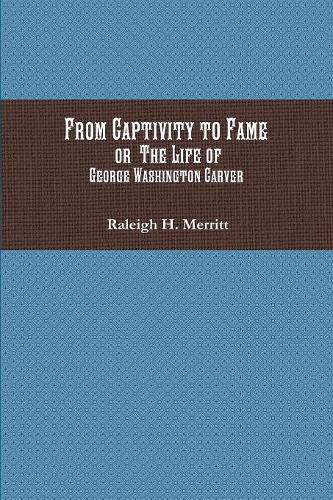Readings Newsletter
Become a Readings Member to make your shopping experience even easier.
Sign in or sign up for free!
You’re not far away from qualifying for FREE standard shipping within Australia
You’ve qualified for FREE standard shipping within Australia
The cart is loading…






This title is printed to order. This book may have been self-published. If so, we cannot guarantee the quality of the content. In the main most books will have gone through the editing process however some may not. We therefore suggest that you be aware of this before ordering this book. If in doubt check either the author or publisher’s details as we are unable to accept any returns unless they are faulty. Please contact us if you have any questions.
The purpose of this book is to record the eminent achievements of a great agricultural chemist, Dr. George Washington Carver, of the Tuskegee Institute; to make known his interesting childhood and youth, his early struggles and later triumphs; and also to accompany him into the great creative stretch of thirty-three years at the Tuskegee Institute, during which time he has accomplished so much for the betterment of mankind.
This book shows him deeply plunged into work for which he has always had an indubitable capacity; it reveals the exercise of his unsurpassed ability, his keen reasoning powers, and his ‘uncommon’ common sense. He is shown at work in his laboratory, reaching out into all regions of science and nature. He is also shown painting flowers, one of his pastime hobbies.
Finally, he has emerged triumphantly from countless difficulties, bringing with him hundreds of by-products from the peanut, the sweet potato, the pecan; and also paints, stains and dyes from common clays of the South–the fruits of victorious struggles.
The supplementary section of this book is composed of bulletins on food and food subjects etc., issued by Dr. Carver. I should think that a few of them will be of especial value to the house-wife, and also the farmer.
While studying agriculture at Tuskegee, I was brought into somewhat intimate relations with Dr. Carver, and began an acquaintance which has continued to grow. Like all students who come in contact with him, I learned to regard him not only as a kindly and good-natured teacher, but also as one who radiated fatherly love. It occurred to me that some day I should like to put something in book form about his life and his marvelous accomplishments.
$9.00 standard shipping within Australia
FREE standard shipping within Australia for orders over $100.00
Express & International shipping calculated at checkout
This title is printed to order. This book may have been self-published. If so, we cannot guarantee the quality of the content. In the main most books will have gone through the editing process however some may not. We therefore suggest that you be aware of this before ordering this book. If in doubt check either the author or publisher’s details as we are unable to accept any returns unless they are faulty. Please contact us if you have any questions.
The purpose of this book is to record the eminent achievements of a great agricultural chemist, Dr. George Washington Carver, of the Tuskegee Institute; to make known his interesting childhood and youth, his early struggles and later triumphs; and also to accompany him into the great creative stretch of thirty-three years at the Tuskegee Institute, during which time he has accomplished so much for the betterment of mankind.
This book shows him deeply plunged into work for which he has always had an indubitable capacity; it reveals the exercise of his unsurpassed ability, his keen reasoning powers, and his ‘uncommon’ common sense. He is shown at work in his laboratory, reaching out into all regions of science and nature. He is also shown painting flowers, one of his pastime hobbies.
Finally, he has emerged triumphantly from countless difficulties, bringing with him hundreds of by-products from the peanut, the sweet potato, the pecan; and also paints, stains and dyes from common clays of the South–the fruits of victorious struggles.
The supplementary section of this book is composed of bulletins on food and food subjects etc., issued by Dr. Carver. I should think that a few of them will be of especial value to the house-wife, and also the farmer.
While studying agriculture at Tuskegee, I was brought into somewhat intimate relations with Dr. Carver, and began an acquaintance which has continued to grow. Like all students who come in contact with him, I learned to regard him not only as a kindly and good-natured teacher, but also as one who radiated fatherly love. It occurred to me that some day I should like to put something in book form about his life and his marvelous accomplishments.